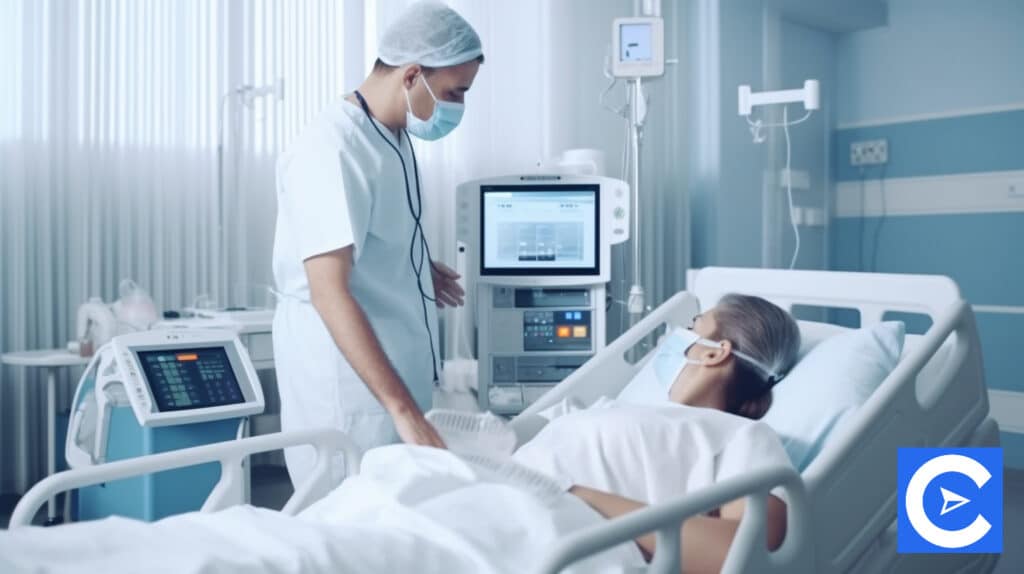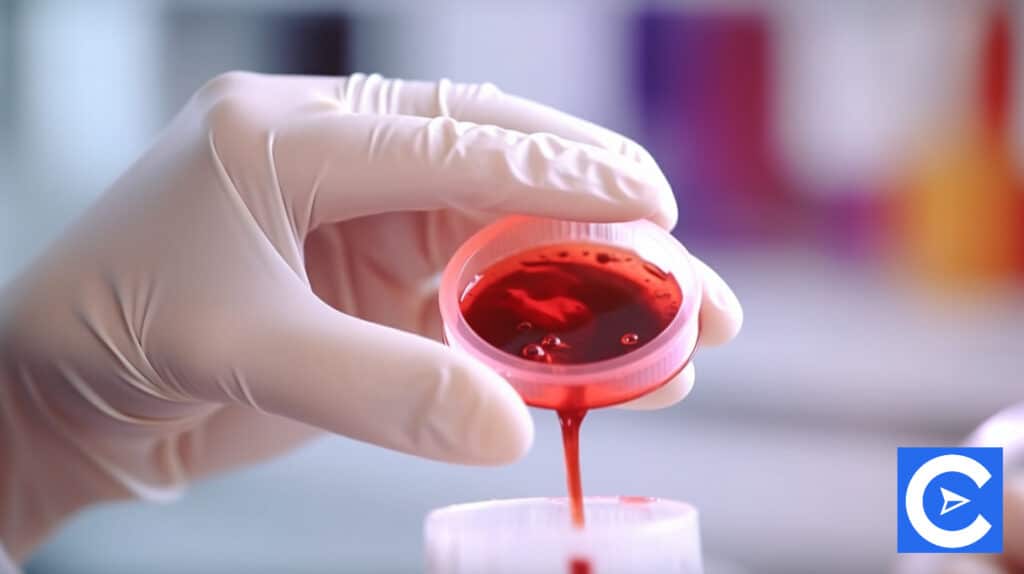Other Free NCLEX PN Study Guides:
There are 8 Modules in NCLEX PN Study Guide. Here you can navigate all the NCLEX PN Study guide modules.
- NCLEX Study Guide Home
- Module 1 | Coordinated Care Of the Patient
- Module 2 | Overall Safety and Control of Infections
- Module 3 | The promotion of health and maintenance
- Module 4 | Integrity in psychosocial functioning
- Module 5 | Providing Basic Care and Ensuring Patient Comfort
- Module 6 | Therapies: Pharmacological and parenteral
- Module 7 | Potential risk reduction
- Module 8.1 | Adapting physiologically
- Module 8.2 | Adapting physiologically
- Module 8.3 | Adapting physiologically
let’s get started right away.
Dementia, head trauma, and strokes

Strokes
Hemorrhagic strokes
In approximately 20% of cases, a ruptured cerebral artery results in a hemorrhagic stroke.
Patients are affected by a lack of oxygen, whereas edema causes pressure and damage.
These strokes can be treated in a variety of ways.
It may be necessary to use artificial ventilation/airway protection if there is severe neurologic compromise.
Blood pressure must also be lowered to control bleeding, but it must be done carefully to avoid hypotension.
Ischemic strokes
As a result of an interruption in blood flow to the brain, ischemic stroke often results.
Ischemic strokes account for 80% of strokes, while hemorrhagic strokes account for 20%.
The following should be included in the management of a patient:
- Thrombolytic
- Antihypertensives
- Ensuring they are cool
- Osmotic diuretics
- Anticoagulation medication
- Surgical intervention to remove the clot, if necessary
Head trauma
Blunt head trauma
The following factors can contribute to this:
- Acceleration-deceleration injuries: In this case, a blow to the stationary head results in the head changing shape with the skull pushing on the brain
- Bruising: When the skull hits the brain, or when the brain hits the skull when moving, there can be bruising
- Shear injuries: The brain moves suddenly, tearing vessels
- Severe compression: If the brain stem is forced through the tentorial opening, it will suffer damage
Cerebral edema and secondary injuries related to head trauma
These head trauma injuries can occur as a result of the trauma:
- Fractures
- Contusions
- Hematomas
- Diffuse cerebral injuries
- Vascular injuries
Thus, cerebral edema, hypoxia, and increased intracranial pressure can result.
Head trauma is characterized by significant swelling as a primary concern.
Consequently, hypoxia and hypercapnia can cause increased blood flow.
As a result, cerebral edema occurs, and intracranial pressure rises, causing perfusion to decrease and ischemia to develop.
Should the pressure continue to rise, eventually the brain may herniate.
Treatments include the following:
- Monitoring CCP and ICP
- Giving the patient oxygen
- Ensuring proper body alignment and making sure the patient’s head is elevated
- Providing analgesics, anticonvulsants, and anesthetics
- Stabilizing hemodynamics by providing blood/fluids
- Providing mechanical ventilation if necessary or otherwise, managing the airway
- Reducing cerebral edema by providing osmotic agents to the patient
Skull fractures
It is common for penetrating wounds to cause cerebral lacerations by fracturing the skull.
A fracture with torn dura is called an open fracture, whereas a fracture without torn dura is called a closed fracture.
In your coursework, you will cover the following skull fractures:
- Basilar
- Comminuted
- Compound
- Depressed
- Linear/hairline
Traumatic brain injury (TBI)
TBI is the result of an external force altering the way the brain functions.
There are three types of TBIs: mild, moderate, and severe.
Sometimes, signs and symptoms of a TBI may not appear immediately depending on the severity of the injury.
As well as blurred vision, and headaches, other signs of TBI include altered levels of consciousness, fatigue, vomiting, coordination and balance problems, slurred speech, seizures, tinnitus, and photosensitivity.
A CT scan, MRI, and x-ray can help diagnose a patient who has suffered a TBI.
Dementia
There is no cure for this condition, and patients will gradually deteriorate over time.
These are some of the types of dementia you may encounter:
- Creutzfeld-Jakob disease
- Dementia with Lewy bodies
- Frontotemporal dementia
- Mixed dementia
- Normal pressure hydrocephalus
- Parkinson’s dementia
- Vascular dementia
Adrenal crisis and Diabetes mellitus

Diabetes mellitus type 1 and 2
There are two types of diabetes: type 1 and type 2.
In type 1 diabetics, the pancreatic beta cells are destroyed in their bodies, so they cannot produce insulin.
Typically, type 2 diabetics are older, have impaired insulin secretion, and are insulin resistant.
Symptoms of type 1 include:
- Polydipsia and polyuria that’s pronounced
- Either obese or suffered recent weight loss
- Ketoacidosis
Symptoms of type 2 include:
- Obesity
- Absent or mild polyuria and polydipsia
- Ketoacidosis
- Hypertension
- Androgen mediated problems
Type 1 treatment includes:
- Insulin used to control blood sugar
- Around one to four times per day, monitoring blood glucose levels
- Diet control and watching carbohydrate intake
- Exercise
Type 2 treatment includes:
- Oral medications
- Glucose monitoring
- Exercise
- Diet
In your coursework, you can learn more about ketoacidosis, which we briefly mentioned above.
Diabetes insipidus (DI)
ADH, or antidiuretic hormone, as well as vasopressin deficiencies can cause DI.
Additionally, it can also develop as a secondary complication of meningitis, encephalitis, brain tumors, pituitary irradiation, and surgical ablation.
Symptoms include:
- Polydipsia
- Polyuria
- Dehydration and hypovolemia
An easy way to diagnose is through a water deprivation test.
There are hormonal and nonhormonal drugs that can be used to treat DI.
Syndrome of inappropriate secretion of antidiuretic hormone (SIADH)
There is a link between SIADH and the pituitary gland, particularly its hypersecretion.
Thus, the kidneys will reabsorb fluids, causing fluid retention in sufferers.
Because of the retention of fluids, concentrated urine is produced.
A central nervous system disorder, such as a tumor or brain trauma, can lead to SIADH.
Besides lung disorders, others such as pneumothorax, tumors on organs, and acute pneumonia can trigger it as well.
It is characterized by crackles on auscultation, anorexia, edema, dyspnea, irritability, camps, stupor, and even seizures.
In addition to treatment of the underlying cause, patients should receive electrolytes and be monitored for correct fluid volume excess while precautions related to potential seizures are a necessity too.
Adrenal crisis
This condition can result from Addison’s disease and is also known as acute adrenal insufficiency.
Sepsis, shock, adrenal hemorrhage, withdrawal from cortisone, and anticoagulation complications, are factors that may precipitate it.
Those with Addison’s disease are not the only ones who can suffer an adrenal crisis, however.
A patient receiving 20 mg of cortisone daily for at least five days might experience it too, for example.
The symptoms include:
- Fever
- Vomiting
- Nausea
- Fatigue and weakness
- Confusion
- Hypotensive shock
- Dehydration
Adrenal crises should be treated as follows:
- IV fluids
- Glucocorticoid
- 50% dextrose if necessary for hypoglycemia
- Mineralocorticoid
- Identify why the crisis has occurred and treat that too
Hyperthyroidism and Hypothyroidism

Hyperthyroidism
It is caused by excessive thyroid hormone production, also known as thyrotoxicosis.
Consequently, the thyroid gland becomes abnormally stimulated.
Thyroiditis and excessive use of thyroid medications are among the other causes of these conditions, however.
In elderly patients, this can cause a variety of symptoms that are generally non-specific including:
- Hyperexcitability
- Tachycardia and atrial fibrillation
- Systolic BP increases
- Poor tolerance to heat (for example, patients will have flushed skin)
- Pruritus and dry skin
- Muscular weakness that gets progressively worse
- Hand tremors
- Bulging eyes (exophthalmos)
- Weight loss despite an increased appetite
Treatments include antithyroid medications, among others while surgical removal is possible too.
Hypothyroidism
Hypothyroidism occurs when there is not enough thyroid hormone produced by the thyroid.
Among the causes are iodine imbalances, diseases, radiation to the thyroid area, atrophy of the thyroid, hyperthyroidism, and chronic lymphocytic thyroiditis.
Symptoms consist of:
- Chronic fatigue
- Hoarseness
- Temperature that’s subnormal
- Menstrual disturbances in women
- Lower than normal pulse rate
- Gaining weight
- Hair that thins
- Skin that thickens
In terms of treatment, hormone replacement is mostly used.
The body’s oxygen demand will increase as a result of this treatment, so cardiac status must be monitored to avoid a myocardial infarction.
Paget’s disease
In this disease, osteoid formation is disorganized and bone turnover is high.
In older patients, Paget’s disease is typically asymptomatic and detectable through radiographs.
Bony deformities, bone pain, and fractures are the most common symptoms when it does present, affecting the skull, humerus, pelvis, tibia, and femur.
The diagnosis is made when urinary hydroxyproline is raised and alkaline phosphatase levels become noticeable.
Among the treatment options are the management of complications and the use of biphosphate.
HIV, Leukemia, and immune deficiencies

Immune deficiencies
There are a number of disorders associated with primary immunodeficiency that can be inherited or acquired.
Congenital immunodeficiencies
These include:
- Common variable immunodeficiency
- Congenital agammaglobulinemia
- Selective IGA deficiency
- Wiskott-aldrich syndrome
Your coursework will cover all of these topics.
Complement deficiencies
There are several deficiencies in the complement pathway, including:
- Classical deficiency
- C3 and alternative complement deficiency
- Membrane attack complex (MAC) deficiency
Autoimmune system disorders
Your coursework covers a number of autoimmune system disorders, so be sure to familiarize yourself with them.
They include:
- Allergic interstitial/tubulointerstitial nephritis refers to inflammation and edema of the kidney’s interstitial areas
- Eosinophilic esophagitis causes chronic inflammation of the esophagus due to eosinophils accumulation
- Chung-Strauss syndrome can affect multiple systems and is a type of idiopathic pulmonary vasculitis
Lymphedema
A patient with untreated or incurable edema will develop lymphedema.
Patients with this chronic condition experience swelling due to the accumulation of fluid within tissues.
As a result of lymphatic drainage failure, this happens.
Lymphedema can cause elephantiasis, papillomatosis, warts, and hyperkeratosis, as well as blisters on the skin.
HIV/AIDS
If HIV infections are not treated, they will progress to AIDS.
Criteria for this to happen include:
- An HIV infection has been detected in the patient
- There are fewer than 200 cells per millimeter3 in their CD4 count
- AIDS-defining opportunistic infections, such as tuberculosis, are present
It is estimated that more than half of AIDS patients suffer from the following symptoms:
- Lymphadenopathy
- Pharyngitis
- Rash
- Fever
- Myalgia/arthralgia
Treatment involves managing the opportunistic infection and taking antiretroviral medications.
Leukemia
During this condition, normal and proliferating cells fight for nutrients.
Leukemia cells, regardless of their type, inhibit the production of every element in the body.
This results in:
- Anemia occurs when patients’ RBC production is reduced
- The neutrophil count is decreasing, which increases the risk of infection
- The number of platelets decreases, so bleeding can increase
- There is an increase in physiological fractures
- Increasing liver, spleen, and lymph gland size and fibrosis
- Infiltration of the central nervous system can cause comas, higher intracranial pressure, dilation of the ventricles, and other complications
- Due to hypermetabolism, cells lack nutrients. The result is fatigue, weight loss, and muscle atrophy
Three types of treatment are available:
- Induction therapy
- Consolidation therapy
- Maintenance therapy
A bone marrow transplant may be required in some cases. Patients will undergo chemotherapy and radiation treatment.
Hematologic pathophysiology

In this section, we will discuss a few conditions that you should be aware of other subjects covered extensively in your coursework.
Anemia
Having insufficient red blood cells leads to anemia, in which the body cannot oxygenate properly.
During this process, the body redistributes the blood to the brain, heart, and abdominal organs while increasing cardiac output as a way of compensating for the decreased blood supply to kidneys, abdominal organs, and skin.
Anemia is characterized by the following signs and symptoms:
- Fatigue
- Hypotension
- Pallor
- Changes in mental status
Shortness of breath, chest pain, and tachycardia are possible symptoms.
Several tests can be used to diagnose anemia, including a complete blood count, iron analyses, and reticulocyte counts.
Treating anemia should be based on its underlying cause.
Blood transfusions are sometimes necessary for patients in extreme situations of anemia.
Sickle cell disease
A recessive genetic disorder of chromosome 11 causes this condition.
As a result, red blood cells are sickle-shaped and inflexible, making them not very effective overall.
Because they only last 10-20 days (instead of 120), bone marrow is stressed because it cannot produce blood cells as quickly as it should.
In this case, the patient suffers from severe anemia, the most severe manifestation of the disease
Various complications may result from sickle cell disease, including organ damage, infarctions, severe pain, and enlargement of the liver and spleen.
In addition to anemia, other complications include congestive heart failure, acute chest syndrome, strokes, pulmonary hypertension, osteonecrosis, seizures, delayed growth, and retinopathy.
In order to treat this disease, the following measures are taken:
- Prophylactic penicillin
- IV fluids
- Analgesics
- Folic acid
- Oxygen
- Blood transfusion
- Hematopoietic stem cell transplantation
- Partial chimerism
Hemophilia
Those with this inherited blood disorder do not have clotting factors in their blood.
Hemophilia is classified into three types:
- Type A: In 90% of cases, clotting factor VIII is missing
- Type B: Clotting factor IX is missing
- Type C: Clotting factor XI is missing
Hemophilia symptoms include:
- Severe trauma bleeding
- Bruises, swelling, joining pain, and bleeding that cannot be explained
- In severe cases, spontaneous hemorrhaging
- Mucosal, epistaxis bleeding
Among the treatments are:
- The use of desmopressin acetate as a way to promote clotting factor production
- Clotting factor infusions
- Plasma infusions
Hematologic procedures

Transfusion components
In medical facilities, the following components are commonly used for transfusions:
- Packed red blood cells
- Platelet concentrates
- Fresh frozen plasma
- Cryoprecipitate
Verify how these are prepared and administered in your coursework.
Autotransfusion
When blood from a patient is collected and reused on them again, it is called an autotransfusion.
Blood from the body cavity can be collected in trauma cases and used in this manner.
Blood usage in this manner like this is particularly useful in emergencies.
If there are malignant lesions, contaminated pooled blood, or wounds older than four to six hours, blood cannot be used in this manner.
Plasmapheresis
A patient’s blood can also be reinfused through this method.
In this case, whole blood has been removed from the body.
Combined with anticoagulants, the plasma and cellular components are separated.
A saline solution is then used to suspend the cellular components before reinfusion.
By doing so, harmful antibodies are taken from the plasma.
In addition to these hematologic procedures, you’ll also need to work through a few others in your coursework.
Complications from a blood transfusion
These include:
- Infections
- TRALI (Transfusion-related acute lung injury)
- Graft vs host disease
- Post transfusion purpura
- Transfusion-related immunosuppression
- Hypothermia
Peptic ulcer disease, GER, and Appendicitis

Peptic ulcer disease (PUD)
Among the complications of PUD are stomach and duodenal ulcers.
As a primary, it usually occurs in the duodenum, while as a secondary, it is normally gastric.
Symptoms include:
- Pain in the abdomen
- Vomiting and nausea
- Bleeding in the GI
Treatment options include:
- Antibiotics
- Proton pump inhibitors
- Bismuth
- Histamine-receptor antagonists
Gastroesophageal reflux (GER)
It is possible to develop GER when the lower esophageal sphincter does not close properly.
In this process, stomach contents move into the esophagus, irritating the lining,
This can result in Barrett’s esophagus, which can lead to esophageal cancer.
The following are signs and symptoms of GER:
- Dysphagia
- Belching
- Heartburn
- Sore throat
- Hoarseness
- Chest pain
- Water brash
Among the treatment options are:
- Proton pump inhibitors
- Surgery
- Elimination of foods that lead to symptoms
Appendicitis
Appendicitis or inflammation of the appendix can occur when there is an obstruction of the lumen or pressure within it.
Symptoms include:
- Severe abdominal pain
- Anorexia
- Vomiting
- Nausea
- Positive obturator and psoas signs
- Fever (usually after a 24-hour period)
- Malaise
- Flatulence
- Bowel irregularity
Hernias and inflammatory bowel disease

Inflammatory bowel disease
Ulcerative colitis
A patient with ulcerative colitis has superficial inflammation of the mucosa and colon, as well as the rectum.
In addition to bleeding, purulent material may be produced.
Symptoms include:
- Anemia
- Abdominal pain
- Depletion of F&E
- Rectal bleeding
- Blood diarrhea
- Regular diarrhea
- Fecal urgency
- Tenesmus
- Weight loss
- Anorexia
- Fatigue
- Eye inflammation, liver disease, arthritis, and other systemic disorders
Among the treatments are:
- Glucocorticoids
- Aminosalicylates
- Antibiotics
- Antidiarrheals, NSAIDs, and D/C anticholinergics
Crohn’s disease
Inflammation presents in the GI system, where, due to its transmural nature, may result in stenosis and fistulas, ultimately leading to ulcers.
Symptoms include:
- Perirectal abscess/fistula (when the disease has advanced significantly)
- Diarrhea
- Stools that are watery
- Rectal hemorrhage
- Anemia
- Pain in the abdomen
- Cramping
- Loss of weight
- Vomiting
- Nausea
- Fever
- Night sweats
Treatment includes:
- Oral lesions can be treated with Triamcinolone
- Elimination of food triggers
- Aminosalicylates
- Glucocorticoids
- Antidiarrheals
- Probiotics
- For patients that have toxicity symptoms, hospitalization is necessary
Hernias
There are either protrusions into or through the abdominal wall.
The following types are available:
- Direct inguinal hernias
- Indirect inguinal hernias
- Femoral hernias
- Umbilical hernia
- Incisional hernias
Symptoms include:
- Often severe pain
- Vomiting
- Nausea
- A soft mass around the site of the hernia
- Tachycardia
- Temperature
Treatment includes:
- Broad spectrum antibiotics
- Surgery
Acute pancreatitis
It may have an unknown etiology, but cholelithiasis and chronic alcoholism cause acute pancreatitis in 90% of cases.
Certain drugs, including oral contraceptives, can trigger it.
The following symptoms are present:
- Acute pain
- Nausea
- Vomiting
- Abdominal distension
Among the treatment options are:
- Medication such as IV fluids, antibiotics, and antiemetics
- TPN, NPO, or clear liquids only
- Surgical intervention
Genitourinary pathophysiology

Incontinence
This is more common in women than in men and can manifest in different stages, from leaking to losing control of the bladder.
Incontinence is further separated into stress incontinence, which happens when you cough, lift, sneeze, or even laugh, and urge incontinence, or when you need to urinate a lot.
The type and severity of urinary incontinence determine the treatment options available.
This could include:
- Bladder training
- Pelvic muscle exercises
- Insertion of a vaginal pessary as bladder support
- Anticholinergics
- Antispasmodics
Ureteral and renal calculi
Several factors contribute to this, such as disease and lifestyle factors, such as those who are sedentary.
Among the diseases are hyperparathyroidism, gout, and renal tubular acidosis.
The following symptoms are present:
- Flank pain that’s severe. This will often radiate to other areas including the abdomen and ipsilateral testicle
- Vomiting
- Nausea
- Diaphoresis
- Hematuria
Among the treatments are:
- Equipment for straining urine
- Antibiotics
- Extracorporeal shock-wave lithotripsy
- Surgical intervention
- Analgesia
Acute kidney injury (AKI)
It refers to an acute disruption of the kidneys in a patient.
As a result, the kidneys will be less perfused, the glomerular filtration rate will decrease, and metabolic waste products such as azotemia will build up in the body.
It is common for critically ill patients to develop AKI in hospitals.
There are several risk factors that contribute to AKI, including age, comorbidities, sepsis, and preexisting kidney conditions.
The following symptoms are present:
- Malaise
- Fatigue
- Lethargy
- Weakness
- Urine color changes and volume
- Confusion
- Pain in the flanks
Treatment will depend on the underlying cause of AKI.
The following can be included:
- Replacing electrolytes
- Diuretic therapy
- Restriction of fluids
- Renal diet
- Low doses of dopamine
Hemodialysis may be necessary for a patient with an acute kidney injury.
Chronic kidney disease (CKD)
An individual with CKD is unable to concentrate urine, maintain electrolyte balances, filter waste, or excrete it.
The following symptoms are present:
- Weight loss
- Headaches
- General malaise
- Muscle cramping
- Bruising
- Dry, itchy skin
- Sodium and fluid retention
- Hyperkalemia
- Metabolic acidosis
- Calcium and phosphorus depletion
- Anemia
- Uremic syndrome
Among the treatments are:
- Supportive therapy
- Kidney dialysis
- Kidney transplants
- Control of diet
- Limitations on fluid
- Supplementation of calcium and vitamins
- Phosphate binders
Musculoskeletal pathophysiology
Immobility
During critical care, patients are immobile for extended periods of time.
As a result, pressure ulcers, DVTs, skin breakdowns, decreased muscle mass, weakness, and overall functional decline can result.
Muscle strength should be maintained and improved through the use of mobility techniques, as well as the necessary support to help the patient return to their previous level following critical care.
Falls
Those in long-term care, especially in hospital settings, are at risk of falling.
People with impaired gait, balance problems, orthostatic hypotension, who have fallen in the past, are elderly, or take medications that increase their risk of falling are at risk here.
Hospital falls result in additional injuries in 30% of cases.
Performing fall risk assessments on patients is the first step in fall prevention.
Carpal Tunnel Syndrome
A thickened flexor tendon sheath, swellings in soft tissues, or skeletal encroachment compress the median nerve, causing an entrapment neuropathy.
Diabetes, arthritis, hypothyroidism, pregnancy, and repetitive hand activities are all linked to carpal tunnel syndrome.
There is usually pain in the wrist, which gradually radiates to the forearm of the patient, with tingling sensations in the first two or three fingers.
Two tests can be used to diagnose carpal tunnel:
- Positive Tinel test
- Positive Phalen test
Carpal tunnel syndrome can be treated in the following ways:
- Relieving symptoms through steroid injections
- Wearing a splint at night or while carrying out activities that cause the problem
- Getting patients to modify the activities that cause it
- Decompression surgery, in some cases
Lumbosacral pain
It is pain in the lower back, which could be caused by a variety of factors.
Among these are muscular weakness, osteoarthritis, spinal stenosis, herniated disks, fractures of the vertebrae, strains, infection, and bone metastases.
A disk herniation or other joint change can press the nerves that leave the spinal cord.
As a result, the pain will radiate along the nerve.
Among the treatments are:
- Analgesia
- Activities within pain tolerance
- Muscle relaxants
- Heat and cold compresses
Fractures, dislocations, and high joint injuries

High joint injuries
A high joint injury is one that has a great impact, such as one sustained in the course of a car accident.
Among them are:
- Open, closed, and compression fractures
- Fracture dislocations and regular dislocations
- Comminution
- Strains
- Sprains
- Lacerations
- Edema, ecchymosis, and trauma to soft tissue
- Shock
When fractures are present, patients will usually experience intense pain, misaligned joints, and a lack of stability.
Dislocations and fractures
Fracture types
The majority of fractures and dislocations occur as a result of trauma.
Some pathologic fractures, such as those caused by osteoporosis, are caused by diseased bones receiving a minor force.
Repetitive trauma causes stress fractures, however.
Orthopedic injuries are of particular concern, including:
- Bone fragments or puncture wounds caused by external forces can cause osteomyelitis following open fractures overlaid by soft tissue.
- In severe cases of subluxation, partial dislocation of a joint, or a complete dislocation of a joint (luxation), neurovascular compromise can occur. This can become permanent should there be a delay in reduction.
Fractures and dislocations are treated as follows:
- Analgesia and sedation
- Cold compress application
- Reduce edema by elevating the fractured area
- Fracture reduction by gradual and steady longitudinal traction. This helps bone realignment
- Using a brace, cast, splint, or sling to immobilize the fracture
- Wound irrigation on an open fracture
- Tetanus prophylaxis
- Antibiotic prophylaxis
This guide will not go into detail about fractures such as those in the pelvis, which will be covered in your coursework.
Musculoskeletal interventions and procedures

Immobilization devices
A few of these are:
- Cervical collar
- Cervical extrication splits
- Backboards
- Full-body splints
- Extremity splints
- Pneumatic anti-shock garment
Spinal immobilization
In recent years, spinal immobilization using a backboard has become less common, due to research showing it’s not always the best option.
The following situations allow the use of a backboard and immobilization of the spine:
- There are neurological complaints including numbness, tingling, weakness, pain, or paralysis in the patient
- Spinal deformity
- Blunt trauma and altered consciousness associated with it
- Drug and alcohol-associated high-energy injuries
According to Canadian C-spine guidelines or Nexus criteria, cervical collars should be used in trauma cases, as deemed necessary.
If a patient exhibits all of the following, a cervical collar is not necessary:
- They are stable and alert
- They are not intoxicated
- Their spine shows no midline tenderness
- They don’t have a distracting injury
- They is no neurological deficit
Casts and splints are commonly used to immobilize fractures and dislocations.









